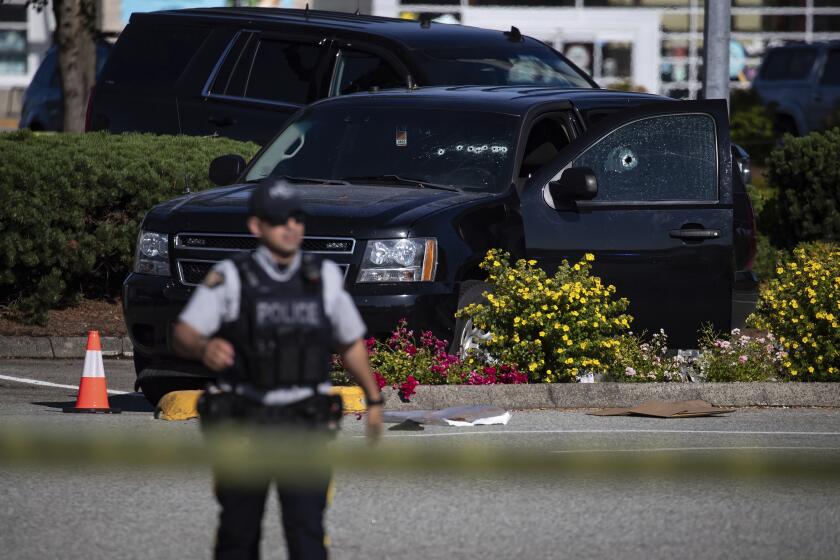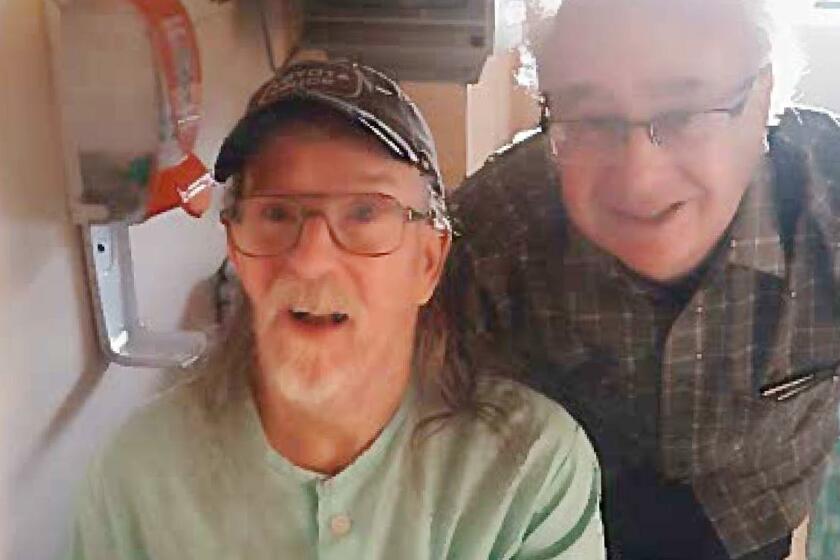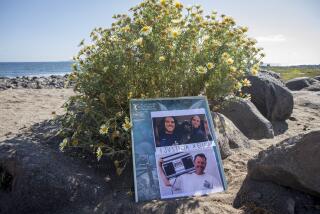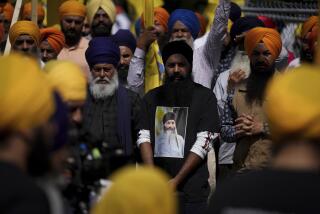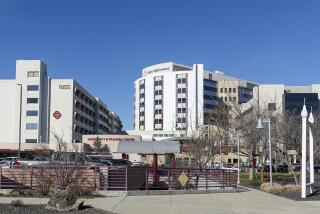Fears high as Canadian police search for stabbing suspect

JAMES SMITH CREE NATION, Saskatchewan — Fears ran high Tuesday on an Indigenous reserve in the Canadian province of Saskatchewan after police warned that the suspect in a deadly stabbing rampage over the weekend might be nearby and officers surrounded a house with guns drawn.
Police later sent out an alert that it was a false alarm and they had determined the suspect was not in the community but people remained nervous with his whereabouts unknown and a province-wide alert still in effect.
People on the James Smith Cree Nation reserve were earlier told to stay inside. An Associated Press reporter saw people running and screaming as police shut down roads.
The fugitive’s brother and fellow suspect, Damien Sanderson, was found dead Monday near the stabbing sites. Police are investigating whether Myles Sanderson killed his brother. The brothers are accused of killing 10 people and wounding 18.
Leaders of the James Smith Cree Nation, where most of the stabbing attacks took place, blamed the killings on the drug and alcohol abuse plaguing the community, which they said was a legacy of the colonization of Indigenous land.
Authorities say a man who targeted homeless people fatally shot two men in a Vancouver suburb before being shot and killed by police.
James Smith Cree Nation resident Darryl Burns and his brother, Ivor Wayne Burns, said their sister, Gloria Lydia Burns, was a first responder who was killed while responding to a call. Burns said his 62-year-old sister was on a crisis response team.
“She went on a call to a house and she got caught up in the violence,” he said. “She was there to help. She was a hero.”
He blamed drugs and pointed to colonization for the rampant drug and alcohol use on reserves.
“We had a murder-suicide here three years ago — my granddaughter and her boyfriend. Last year we had a double homicide. Now this year we have 10 more that have passed away, and all because of drugs and alcohol,” Darryl Burns said.
Canada arguably has the world’s most permissive euthanasia rules, but human rights advocates say those regulations devalue the lives of disabled people.
Ivor Wayne Burns also blamed drugs for his sister’s death and said the wanted brothers should not be hated.
“We have to forgive them boys,” he said. “When you are doing hard drugs, when you are doing coke, and when you are doing heroin and crystal meth and those things, you are incapable of feeling. You stab somebody and you think it’s funny. You stab them again and you laugh.”
Rhonda Blackmore, a commander with the Royal Canadian Mounted Police,
said police were still determining the motive, but the chief of the Federation of Sovereign Indigenous Nations echoed suggestions that the stabbings could be drug-related.
“This is the destruction we face when harmful illegal drugs invade our communities, and we demand all authorities to take direction from the chiefs and councils and their membership to create safer and healthier communities for our people,” said Chief Bobby Cameron.
Breaking News
Get breaking news, investigations, analysis and more signature journalism from the Los Angeles Times in your inbox.
You may occasionally receive promotional content from the Los Angeles Times.
Blackmore said Myles Sanderson‘s criminal record dates back years and includes violence. Last May, Saskatchewan Crime Stoppers issued a wanted list in which he was described as “unlawfully at large.”
Before Damien Sanderson’s body was found, arrest warrants were issued for the suspects, and both men faced at least one count each of murder and attempted murder.
The stabbing attack was among the deadliest mass killings in Canada, where such crimes are less common than in the U.S. The deadliest gun rampage in Canadian history happened in 2020, when a man disguised as a police officer shot people in their homes and set fires across the province of Nova Scotia, killing 22 people. In 2018, a man used a van to kill 10 pedestrians in Toronto.
Deadly mass stabbings are rarer than mass shootings but have happened around the world. In 2014, 31 people were slashed and stabbed to death at a train station in China’s southwestern city of Kunming. In 2016, a mass stabbing at a facility for the mentally disabled in Sagamihara, Japan, left 19 people dead. A year later, three men killed eight people in a vehicle and stabbing attack at London Bridge.
Police in Saskatchewan got their first call about a stabbing at 5:40 a.m. on Sunday, and within minutes heard about several more. In all, dead or wounded people were found at 13 different locations on the sparsely populated reserve and in the town, Blackmore said. James Smith Cree Nation is about 20 miles from Weldon.
Among the 10 killed was Lana Head, who is the former partner of Michael Brett Burns and the mother of their two daughters.
“It’s sick how jail time, drugs and alcohol can destroy many lives,” Burns told the Aboriginal Peoples Television Network. “I’m hurt for all this loss.”
Weldon residents have identified one of the dead as Wes Petterson, a retired widower who made coffee every morning at the senior center. He loved gardening, picking berries, canning, and making jam and cakes, recalled William Works, 47, and his mother, Sharon Works, 64.
“He would give you the shirt off his back if he could,” William Works said, describing his neighbor as a “gentle old fellow” and “community first.”
Sharon Works was baffled: “I don’t understand why [the suspects] would target someone like him anyway, because he was just a poor, helpless little man, 100 pounds soaking wet. And he could hardly breathe because he had asthma and emphysema and everybody cared about him because that’s the way he was. He cared about everybody else. And they cared about him.”
More to Read
Sign up for Essential California
The most important California stories and recommendations in your inbox every morning.
You may occasionally receive promotional content from the Los Angeles Times.
